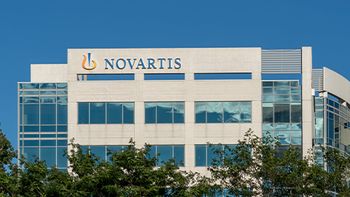
- Pharmaceutical Commerce - September/October 2014
Lifecycle solutions: aiming for better patient outcomes through high-quality prefillable solutions
The increasing concern for patient safety in addition to increased quality and regulatory requirements have contributed to the evolution of improved drug delivery. Choices for primary containment and delivery systems can impact time to market, and more importantly, patient outcomes. A poor choice for primary containment can increase risks for long-term drug stability, and may contribute to ineffective dose delivery, recalls and increased patient risk. Incompatibility between the drug product and its containment or delivery system can result in particulate and leachables formation, poor device performance and can negatively impact patient compliance to prescribed therapeutic regimens.
To achieve the best possible patient outcomes, pharmaceutical companies developing complex and sensitive biologic or biosimilar injectable therapies must consider how the drug product will interact not only with the primary container, but also with the delivery system and the patient to help ensure compliance to prescribed regimens.
By partnering with a component manufacturer early in the drug development process, pharmaceutical manufacturers can identify and mitigate many of the risks associated with poor containment selection. Flexible containment solutions use the same materials for drug contact, but in a variety of configuration options that aid in stability and delivery from discovery through commercialization and through drug lifecycle management, may help achieve better patient outcomes.
Primary containment issues
In a recent draft guidance, “Immunogenicity Assessment for Therapeutic Protein Products,” the United States Food and Drug Administration (FDA) called attention to issues commonly associated with container closure systems, including:
- denaturation and aggregation of proteins at glass-air interfaces
- glass delamination and particulate formation in certain drug formulations
- protein aggregation associated with silicone-lubricated containers
- leachables from container components
These issues may affect the therapeutic activity of the drug product, and the recommendations come at a time when such issues have led to an increase in the number of recalls. For instance, in 2011, 10 drug product recalls were caused by glass particulates in the drug product solution. The pace continued in 2012 with recalls of 19 lots of four different injectable oncology products caused by the discovery of glass particles.
To help solve fundamental incompatibilities that may exist between a drug formulation and its primary container, manufacturers are exploring and adopting alternative materials of construction, such as cyclic olefin polymers, that may help assure stability during a drug product’s shelf life.
Another consideration in this process is the need to integrate primary containers into drug-device combination products. As patients take a more active role in their individual healthcare, and the administration of injectable drug products moves from physicians to caregivers and patients, there is a greater need to provide an easy-to-use delivery system or combination product that assures safe and reliable administration. This may include the use of prefillable syringes, which help to assure dose accuracy and minimize errors when compared to a vial and disposable syringe format. There is also an increase in the use of disposable auto-injector systems (Fig. 1), which aid in dosing convenience, reduce patient fear because the needle is hidden and include safety features that hide the needle before and after injection. Finally, there is a trend toward new systems that allow for even greater patient convenience. These cartridge-based systems include the use of pen injectors for frequently administered products, as well as large-volume electronic wearable injector delivery systems that can offer either less frequent administration or conversions of products from intravenous to subcutaneous administration.
Identifying material risks
In order to ensure drug product integrity, containment materials must be compatible with both the drug product itself and the delivery system. The selection of the proper containment system will aid the drug by reducing potential extractables and formation of leachables, or other interactions with the product, including glass delamination and protein aggregation. In turn, that containment system should be suitable for use and function properly within the final delivery system.
As noted in Fig. 2, companies with drug product lifecycle strategies seek to move the product to market quickly, which often means that the product will arrive on the market in a vial and syringe format. As use increases, the delivery system may transition to a prefilled syringe system, and finally a delivery device such as an auto-injector or a wearable patch injection system. However, if the drug is in a highly competitive therapeutic drug class, companies will launch with a prefilled syringe or delivery device format. Selecting a primary containment material, such as a cyclic olefin polymer, as well as components that enable efficient delivery and functionality with the device or system, may aid in patient compliance and efficacy of the drug product through accurate dosing and ease of self-administration.
Prefillable syringe systems may increase compliance through ease of use and decrease errors through precise dosing, provide caregiver safety through use of safety devices, and a lifestyle preference when combined with an auto-injector because of self-injection convenience.
Proper material and design selection for components, including the barrel in a prefillable syringe must consider requirements such as long-term drug compatibility, dimensional tolerance and fit for container closure integrity, the force required to remove the tip cap or needle shield cover—which may be an issue with those suffering from limited dexterity—breakloose and extrusion for optimized injection forces and needle size. Components must be matched to meet the requirements over the intended shelf life of the drug product and under all conditions of storage and use.
When selecting proper materials for a specific drug product, the following questions should be considered:
- How does the container closure system interact with the drug product? Is the material chemically stable and inert?
- Is the primary container system suitable for use in an auto-injector or patch injection system?
- Will the drug product require sterilization or low-temperature storage?
- Will the presence of metal ions—which are often a potential extractable from materials or even residuals left behind after processing—cause issues such as protein degradation or particle formation?
- For a prefillable syringe, is the combination product fit for manual injection and automatic injection?
- Is the drug compatible with silicone oil, which can induce particulate in many drug products?
Many biotech and sensitive drug products have unique requirements, and polymer systems provide key solutions for patient safety and compliance. There are a variety of products on the market that can help mitigate these risks, including barrier films for elastomer components that help to reduce potential extractables and leachables formation. For materials that are sensitive to glass, cyclic olefin polymers can be molded into a variety of shapes and sizes to accommodate not only the drug product, but also large-volume doses. In addition, cyclic olefins can be molded to suit innovative delivery devices, offering differentiation in the market. An insert needle prefillable syringe, such as the Daikyo Crystal Zenith® 1mL Insert needle syringe, may be required for a drug product with metal and silicone oil sensitivities.
System selection
While the primary focus of most pharmaceutical companies is on the drug product itself, early collaboration with a packaging and/or device partner during the lengthy development stages can result in a delivery system that meets the needs of both the drug and the patient. Research and development for a biologic drug product can typically last as long as 15 years and cost as much as $1.2 billion. [1] So when the drug product reaches the market, the originator may have only a few years remaining on the patent. Often, the delivery system is only thought of during the final stages of development and not fully considered during primary container selection. If the drug product cannot be stored effectively or reacts chemically to the containment materials, or if the system does not function well with a high-viscosity drug or is not a good fit for the intended patient population, it can be a costly issue for the manufacturer. Considerations relating to dosing volume, delivery technique and frequency, and if the drug product will be delivered in a system such as an auto-injector, should all be taken into account at an early stage to ensure optimum speed to market and opportunity for success.
As noted previously, there is a strong trend for biologic delivery to move from its original containment system, such as intravenous delivery, to formats like subcutaneous injection via a prefillable syringe system or auto-injection device. Pharmaceutical manufacturers have several options for drug delivery solutions, but for some, compromises may be required.
Select an off-the-shelf system — while this selection may work for many drug products, it may require re-working for specific drug products and adaptation costs may be considerable. Functionality challenges may remain throughout use.
Increase existing device complexity — often highly expensive and complicated, this option may extend time to market.
Simplify an existing device — excluding features of a system that is prone to breakage, such as a spring-driven delivery device, has always posed a risk of incomplete injection.
Market in a prefillable syringe system only — this will require significant adoption, compliance and adherence on behalf of the patient, and many barriers, such as needle phobia, may exist.
Create a new device — By working with a packaging partner that has experience in contract manufacturing, a device can be created using the same materials throughout the drug product’s lifecycle while providing differentiation in the market, and ensuring ease of use for the patient.
Even with these challenges, there are opportunities to improve the patient experience via formulation and delivery device technologies. By partnering with packaging and delivery systems companies, drug companies can optimize treatment regimens through initiatives such as:
- Formulating drugs to higher concentrations, to reduce dosing frequency
- Using higher-volume delivery systems to deliver a larger volume and reduce dosing frequency
- Using higher-volume systems to allow for more diverse formulation options that may not be possible if the dose is limited to a small volume
Collaborating with a single partner with diverse expertise in primary packaging, delivery systems, custom design and analytical testing early in the drug process can help at a variety of stages. For example, packaging manufacturers who also provide analytical laboratory services can offer product recommendations to the latest alternative technologies and provide prescreen stability work early in the process to ensure that the containment materials do not react with the drug product. Many biologics, by their very nature, do not respond well to glass containment, which can result in higher levels of extractables and leachables, protein aggregation or the risk of glass delamination. Cyclic olefin polymers (COPs) offer an alternative to traditional glass and, since COPs can be molded to a variety of shapes, they can provide containment throughout the drug product’s lifecycle. Such choices early in development may also aid decisions later in the manufacturing cycle. COPs also offer improved dimensional tolerance and design flexibility, so innovative container/device combinations can be considered to help optimize overall system design based on the needs of the patient. Companies challenged with multiple containment needs during drug development and lifecycle strategies can work closely with the partner to match technology, collaborate during development and ensure the primary container is compatible with the drug and device for best patient outcomes.
West dedicates a manufacturing plant in India
In July, West Pharmaceutical Services, Inc. dedicated its manufacturing plant in the Sri City Special Economic Zone (SEZ), where the company will expand its growing primary packaging for injectable medicines business. Construction of the 15,300 sq. m. (approximately 164,700 sq. ft.) facility began in 2012. It will produce seals used in primary packaging of injectable medicines manufactured by West’s pharmaceutical and biopharmaceutical customers in India and the wider Asia Pacific region. There are future plans to expand production at the site to include West’s elastomer component business.
“This investment is important to our strategy of partnering with customers in India and the Asia Pacific region to help them provide medicines to patients more efficiently, reliably and safely,” said Warwick Bedwell, president, pharmaceutical packaging systems, Asia Pacific Region. “With the facility complete, we anticipate a reduction in lead times for supply to our customers in India.”
West’s presence in the Asia Pacific market includes a plant in Singapore, two plants in Qingpu, China and sales offices in Australia, China, India and Singapore. The company also owns 25% of Daikyo Seiko, Ltd., (Tokyo, Japan), a developer of pharmaceutical packaging and medical device components.
Daikyo Crystal Zenith is a registered trademark of Daikyo Seiko, Ltd.
Daikyo Crystal Zenith technology is licensed from Daikyo Seiko, Ltd.
ABOUT THE AUTHORS
Kevin Cancelliere is director of marketing, pharmaceutical delivery systems at West. He brings nearly 30 years of broad operational and strategic marketing and sales experience to this position. Prior experience includes Vicept Therapeutics and Wyeth Laboratories. Cancelliere holds a BS in biology from De Sales University and an MS in biochemistry from Thomas Jefferson University.
Tibor Hlobik is marketing director, global prefillable syringe technologies at West, responsible for supporting business development efforts, and for defining new products and executing strategies for West’s Prefillable Syringe technology platform. His more than 25 years of pharmaceutical packaging experience includes R&D, quality, technical and marketing roles, primarily at West.
Articles in this issue
over 11 years ago
A conversation with Seyed Mortazavi, IMS Healthover 11 years ago
PBM formulary exclusion lists continue to growover 11 years ago
Catalent goes public in a successful IPOover 11 years ago
EvaluatePharma forecast: 2020 global pharma sales of $1.107 trillionover 11 years ago
Agency rides the rare-disease waveover 11 years ago
Legal uncertainties in the DSCSAover 11 years ago
Is tech running you? Four ways to retake controlover 11 years ago
Pharma rep access: down, down, downNewsletter
Stay ahead in the life sciences industry with Pharmaceutical Commerce, the latest news, trends, and strategies in drug distribution, commercialization, and market access.





